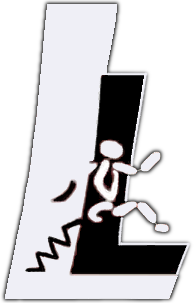| Both sides previous revision
Previous revision
Next revision
|
Previous revision
Next revision
Both sides next revision
|
start [2019/04/04 14:11]
Andre Seyfarth [News] |
start [2019/06/18 10:41]
Maziar Sharbafi [Concerted control concept in locomotion] |
| ====== News ====== | ====== News ====== |
| |
| **Movement Academy on Parkinson Gait*** This movement acadamy will take place in castle Kranichstein in Darmstadt on June 4 and 5, 2019 | * **Movement Academy on Parkinson Gait** The Lauflabor organizes the [[http://wiki.ifs-tud.de/biomechanik/aktuelle_themen/bewak2019|first movement academy]] in Darmstadt on June 4 and 5, 2019 |
| |
| **Dynamic Walking 2019** is announced! Click [[http://dynamicwalking.org/index.php/dw/2019|here]] for details. | * **Dynamic Walking 2019** is announced! Click [[http://dynamicwalking.org/index.php/dw/2019|here]] for details. |
| |
| **Lauflabor Best Student Thesis Award 2018** Apply now until June 30, 2019. Click here for details: | * **Lauflabor Best Student Thesis Award 2018** Apply now until June 30, 2019. Click here for details: {{ :ll02_best_thesis_award18.pdf | Flyer }} |
| {{ :ll02_best_thesis_award18.pdf | Flyer }} | |
| |
| {{::ansymb_logo_i.png?90 |}} | * {{::ansymb_logo_i.png?90 | Teaching course ANSYMB II}} **Running this summer term!** [[http://www.ansymb.tu-darmstadt.de/| Analysis and Synthesis of Human Movements]] |
| | |
| **Teaching course ANSYMB II running this summer term!** [[http://www.ansymb.tu-darmstadt.de/| Analysis and Synthesis of Human Movements]] | |
| ====== Pick of the Month ====== | ====== Pick of the Month ====== |
| |
| |
| ==== Concerted control concept in locomotion ==== | ==== Concerted control concept in locomotion ==== |
| | {{ :templatetoanchor.png?nolink&500|}} |
| |
| {{ :fig_2.png?nolink&200|}} {{ :fig_1a.png?nolink&200|}} | A new level of modelling evolution is introduced with replacing springs by muscle models in our recently published paper in the //Royal Society Open Science// journal titled [[https://doi.org/10.1098/rsos.181911|From template to anchors: transfer of virtual pendulum posture control balance template to adaptive neuromuscular gait model increases walking stability]]. |
| | |
| A new concept termed concerted control is introduced in our recently published paper in the //IEEE Transactions on Medical Robotics and Bionics// journal titled [[https://doi.org/10.1109/TMRB.2019.2895891|Concerted control of stance and balance locomotor subfunctions -Leg force as a conductor]]. | |
| |
| |
| **Abstract:** | **Abstract:** |
| |
| In human locomotion, the complex structure of the human body is controlled such that conceptual models (e.g., the spring-loaded-inverted-pendulum model) can describe the significant features. This suggests that the interplay of the complex control and musculoskeletal systems projects into a low-dimensional space to perform different movements. Such simplification can involve splitting the task into different modular control subproblems (locomotor subfunctions) that can be solved individually. Here, we asked how two locomotor subfunctions, namely stance, and balance, could be coordinated to generate repeatable and robust motor commands. We developed a simple neuromechanical hopping model, based on decoupling axial and perpendicular leg forces. For this, bouncing behaviors and trunk posture control can be addressed by a knee extensor muscle and biarticular thigh muscles, respectively. We suggest utilizing the leg force feedback as interplay among environment, body mechanics, and sensory control to synchronize the decoupled subfunctions. We evaluated this approach in push recovery, attenuating ground drop perturbations and by investigating its sensitivity to the reflex gain as the control parameter. Leg force feedback can improve the robustness of hopping by generating rhythmic hopping patterns. Such a parsimony model-based control concept could simplify controlling assistive devices, such as exoskeletons and prostheses. | Biomechanical models with different levels of complexity are of advantage to understand the underlying principles of legged locomotion. Following a minimalistic approach of gradually increasing model complexity based on Template & Anchor concept, in this paper, a spring-loaded inverted pendulum-based walking model is extended by a rigid trunk, hip muscles and reflex control, called nmF (neuromuscular force modulated compliant hip) model. Our control strategy includes leg force feedback to activate hip muscles (originated from the FMCH approach), and a discrete linear quadratic regulator for adapting muscle reflexes. The nmF model demonstrates human-like walking kinematic and dynamic features such as the virtual pendulum (VP) concept, inherited from the FMCH model. Moreover, the robustness against postural perturbations is two times higher in the nmF model compared to the FMCH model and even further increased in the adaptive nmF model. This is due to the intrinsic muscle dynamics and the tuning of the reflex gains. With this, we demonstrate, for the first time, the evolution of mechanical template models (e.g. VP concept) to a more physiological level (nmF model). This shows that the template model can be successfully used to design and control robust locomotor systems with more realistic system behaviours. |
| |
| **Keywords:** Locomotor subfunction, positive force feedback, reflex control, sensor-motor map. | **Keywords:** Template & Anchor, leg force feedback, posture control, reflex control, sensor-motor map. |
| |
| |




